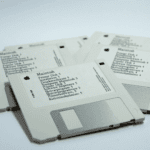Let’s talk about data. It’s everywhere right now, right? The term has become synonymous with the tech boom of the 2020s. But here’s the catch, data isn’t something we just discovered. It’s always been essential. The real shift? How accessible it has become today, thanks to the massive strides in AI and machine learning.
Before we get into the significance of data in today’s world, let’s first take a step back and understand what exactly it is, and how it was just as important long before we developed advanced AI models.
So, What Is Data?
At its core, data is simply information (I’ll use ‘information’ interchangeably with ‘data’ in this article.) Facts and figures collected for analysis. This can include numbers, text, images, sounds, or even behaviors. In today’s tech landscape, it typically refers to information that’s collected, processed, and analyzed to uncover patterns, make predictions, and guide decisions.
But if we look further back, the concept of data wasn’t quite as tech-heavy or complex. Ancient civilizations were collecting it, too. Whether it was agricultural records, population counts, or tax assessments, early societies recognized the value of accurate records. In fact, the earliest written documents we have, from ancient Sumerians to Egyptians, were based on information like crop yields, trade inventories, and census records.
Even back then, information wasn’t just a nice-to-have; it was vital for decision-making, resource management, and survival.
The Role of Data Through History
While data has been around forever, its true potential didn’t fully reveal itself until the Industrial Revolution and the rise of mechanical computation. In pre-industrial times, data collection was pretty manual. People recorded information in ledgers or on papyrus, relying on physical counts or estimates.
Then came the 20th century, and things changed fast. The invention of computers, like the ENIAC (Electronic Numerical Integrator and Computer), revolutionized how we process information. These early machines weren’t just faster calculators; they allowed for the massive storage and processing of numbers, data, at a scale humans could never have achieved manually. But the real game-changer? The possibility of analyzing and using that information in ways that were previously unimaginable.
Before AI and ML
Even before the rise of AI and machine learning, information was a critical tool, albeit in a less flashy way. Back then, businesses, governments, and scientists relied on it to make decisions, whether that was managing finances, allocating resources, or driving research.
For instance, in the mid-20th century, companies like General Electric used information to optimize their manufacturing processes. Governments relied on census records to allocate resources and make policy decisions. In science, this information was central to understanding the natural world, whether through astronomy, biology, or physics.
Though the tools were simpler, the importance of this information was just as clear. The main difference was that it wasn’t as easily accessible or processed in real time. It required more manual effort and time to make use of it.
The Revolution
Now, let’s zoom into the 21st century. The digital age has brought us to what I’ll call the Data Revolution. With AI and machine learning, the way we handle information has completely transformed. These technologies allow us to process and analyze vast amounts of data from multiple sources, often in real time. We’re now able to uncover patterns, make predictions, and draw insights from data at a scale and speed that was once impossible.
But here’s the kicker: while AI and ML have revolutionized how we access and analyze information, the core value of data hasn’t changed. What has evolved is the scale and speed at which we can collect and process it.
Today, data is no longer just a secondary tool; it’s a primary driver of innovation, business strategies, and technological advancement. From personalized recommendations on Netflix to self-driving cars, data powered by AI and ML is at the heart of modern technology. But while the tools have advanced, it’s important to remember that the role of information remains as essential as it ever was.
Conclusion
When we talk about how crucial data is today, it’s important to understand that its value isn’t something new. Data has always been vital, it’s just that now, we have far better tools to manage it. Whether it was ancient scribes recording census numbers on clay tablets or AI models crunching billions of data points, the function of data has remained constant: to inform, guide, and improve decision-making.
As we continue to push forward into a future where information is even more ubiquitous, we must remember that its fundamental role in shaping decisions hasn’t changed. The difference lies in how we can now access, analyze, and apply data in ways that were once impossible.



